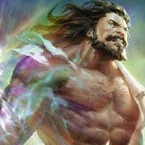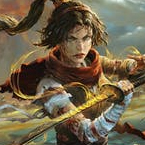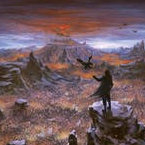Road to Nationals is in full swing, and players across the world are battling for their spot at the National Championships. We have seen all 12 Heroes make Top 8, and 9 of them have taken home the coveted Rainbow Foil Extended Art Tunic.
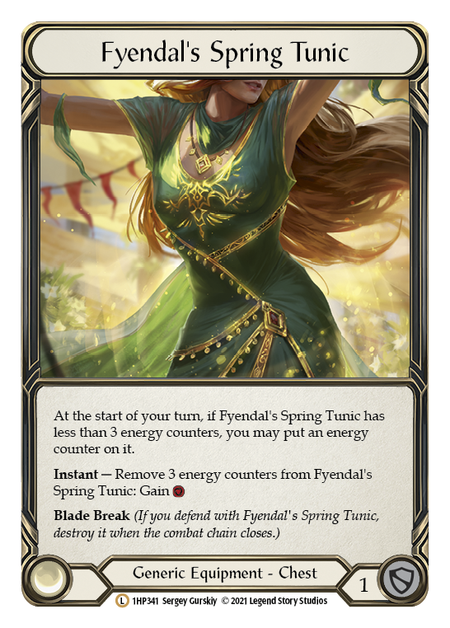
Data has been meticulously tracked by the community’s own TowerNumber9, and can be viewed on Google Sheets here. A quick glance makes it is clear that Chane has a leading position in this new meta.
But we're not here to talk about Chane (subscribers can read competitive insights on Chane here). Today, we're talking about the hero standing right beside him on the podium: Katsu, the Wanderer.

On the first weekend of the Road to Nationals season, I took down a 38-player event with Katsu. (You can read my tournament report here, and view that decklist on FABTCG's site here.) The following week, I piloted the same deck to the finals, taking 2nd against my good friend Sam Yuen's Bravo list. I finished those two weekends with 16 wins and 2 losses.
The Decklist
Today, I'm presenting a slight modification of that list, aiming to slightly improve our matchups against the major forces of the meta.
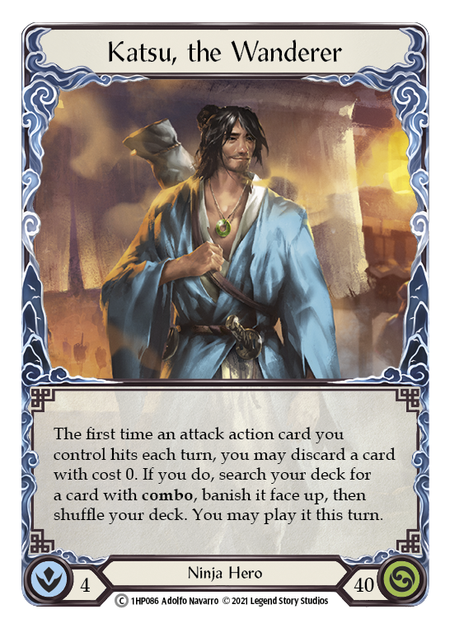
Weapons
- Harmonized Kodachi (1)
Equipment
- Breeze Rider Boots (1)
- Breaking Scales (1)
- Nullrune Gloves (1)
- Nullrune Robe (1)
- Fyendal's Spring Tunic (1)
- Mask of Momentum (1)
- Nullrune Boots (1)
Loadout
- Enlightened Strike (Red) (3)
- Ancestral Empowerment (Red) (3)
- Find Center (Blue) (3)
- Crane Dance (Red) (3)
- Crane Dance (Blue) (3)
- Flic Flak (Red) (3)
- Fluster Fist (Red) (3)
- Fluster Fist (Blue) (3)
- Remembrance (Yellow) (2)
- Fate Foreseen (Red) (3)
- Razor Reflex (Red) (3)
- Lord of Wind (Blue) (3)
- Torrent of Tempo (Red) (3)
- Flic Flak (Yellow) (3)
- Flic Flak (Blue) (3)
- Command and Conquer (Red) (3)
- Sink Below (Red) (3)
- Soulbead Strike (Red) (3)
- Whelming Gustwave (Blue) (3)
- Sigil of Solace (Red) (3)
- Surging Strike (Red) (3)
- Whelming Gustwave (Red) (3)
- Unmovable (Red) (3)
- Mugenshi: RELEASE (Yellow) (3)
The strength of Midrange Katsu lies in its flexibility. We can win games through damage, and we can win games through 'control'. We use the term 'midrange' to describe the deck as a whole, because it can land devastating attack combos but also has access to the best defense reactions in the game. It lands squarely in the middle between Aggro and Pure Control.
What does 'control' mean in FaB?
Every decklist has a set number of powerful red cards that they can use to push into the opponent’s life total. A Katsu control deck aims to play a long game, mitigating our opponent’s powerful cards with defense reactions and blocking, while at the same time gaining incremental advantages through the use of our Harmonized Kodachis and potential Mask of Momentum triggers.

Turn Cycles
Your average turn cycle (opponent’s turn, then your attacking turn) will often be blocking with 2 cards- preferably a Flic Flak and a Combo card- and holding a blue 0 cost card to pitch, and a red attack action. This strategy allows you to mitigate quite a bit of damage and still return fire, chipping in with Kodachis and threatening a potential Mask trigger and Katsu ability to go even wider for the maximum punishment.
When an opponent blocks from hand to stop your triggers, you are creating virtual card advantage. Let’s say an opponent blocks with 2 cards from hand. Their next turn is now 50% weaker, giving you an opportunity to soak the damage and come in with a full powered 4-5 card hand, changing the tempo of the game dramatically.
This is exactly where Midrange Katsu truly shines. And even when an opponent is presenting one of their stronger turns with a 4-5 card hand, you will have no problem laying down your entire hand to stop their damage. Take a turn off, and live to fight another day.
Key Cards
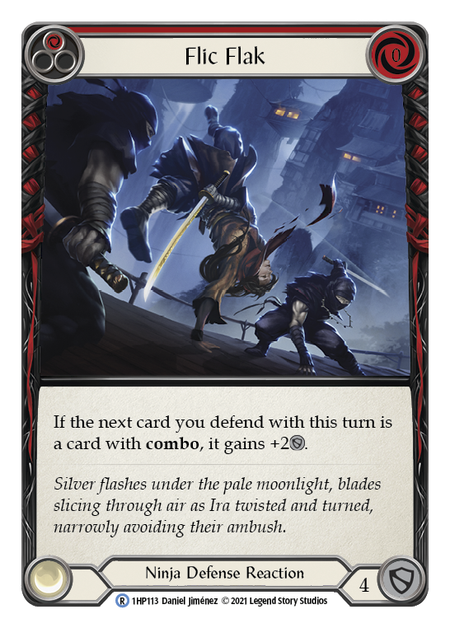
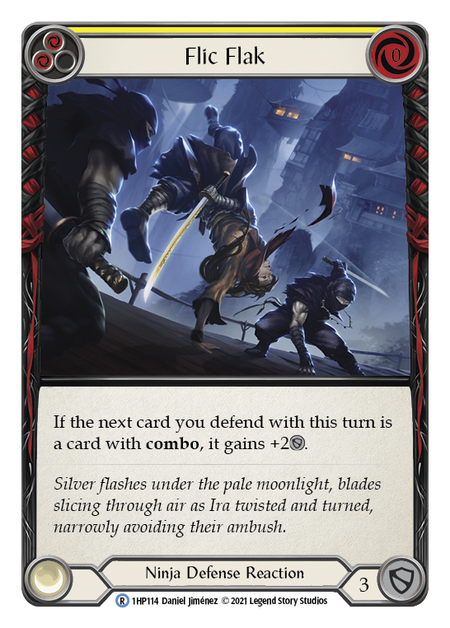
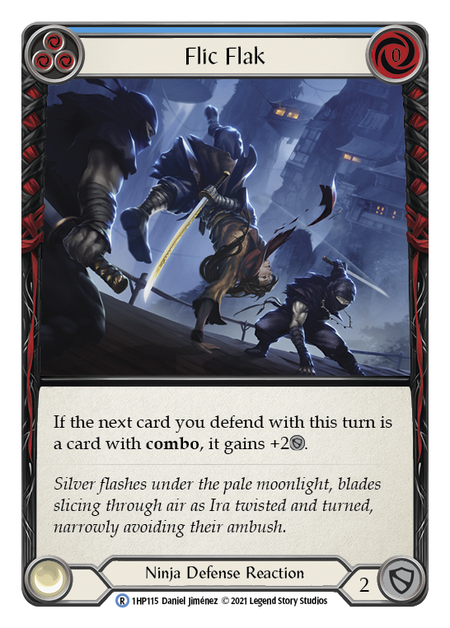
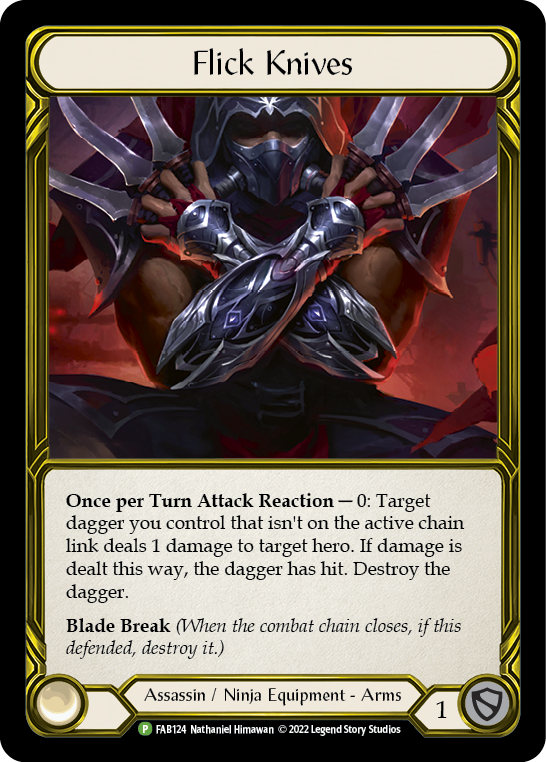
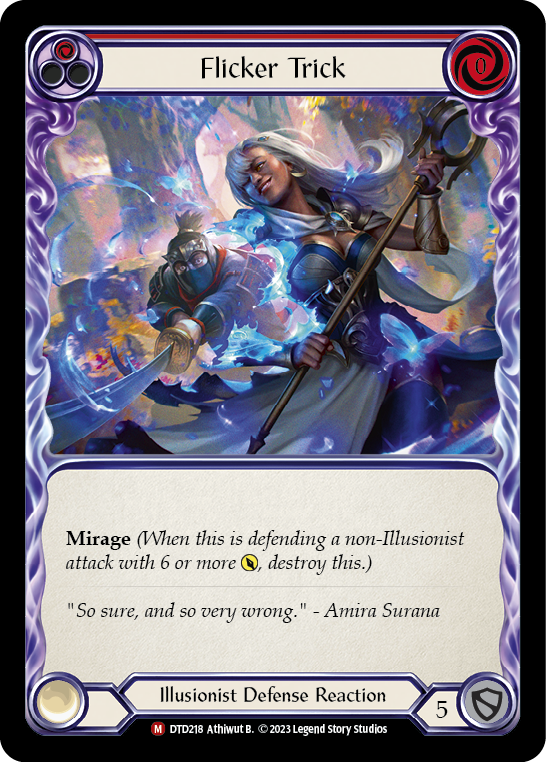
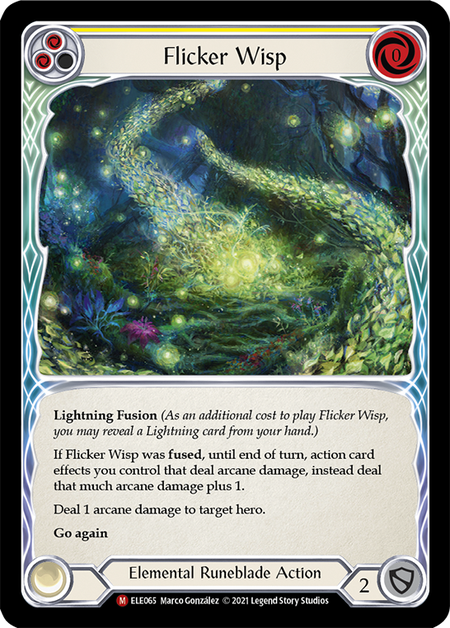
Understanding the power of Flic Flak is of paramount importance. It is my belief that Flic Flak is one of the strongest cards in the game. Here's why.
Card advantage in Flesh and Blood is a concept misunderstood by most due to the core mechanics of the game, and further obvuscated by each player drawing to their Intellect with each turn cycle. Card advantage is only gained when the card can be used before you'd naturally re-draw your hand, or when the card you took from your opponent can't be replaced before it's used. Command and Conquer drains a card from your opponent, while Mask of Momentum often gives you a usable card as you execute your go-wide turn.
Flic Flak offers what I call 'virtual card advantage'. It does not draw you a card, but it does net you 1 card worth of value. If you block with a red Flic Flak and then block with a Combo card, you will have blocked 9 points of damage with only 2 cards; to block for 9, most heroes have to use 3 cards!
A pair of Harmonized Kodachi are a Ninja’s best friend. With a very low opportunity cost (Kodachi usually has 'go again') and 2 damage spread across two sources, these weapons are inconspicuously powerful. Most heroes have to get an opponent to 0 to win the game; Katsu just has to get his opponent to 1. When an opponent is at 1 life, they're in a “Kodachi Lock”, and are now forced to block every attack the Ninja makes. Maximizing your Kodachi chip damage- and utilizing them to turn on your Mask of Momentum- is key to victory with this deck.
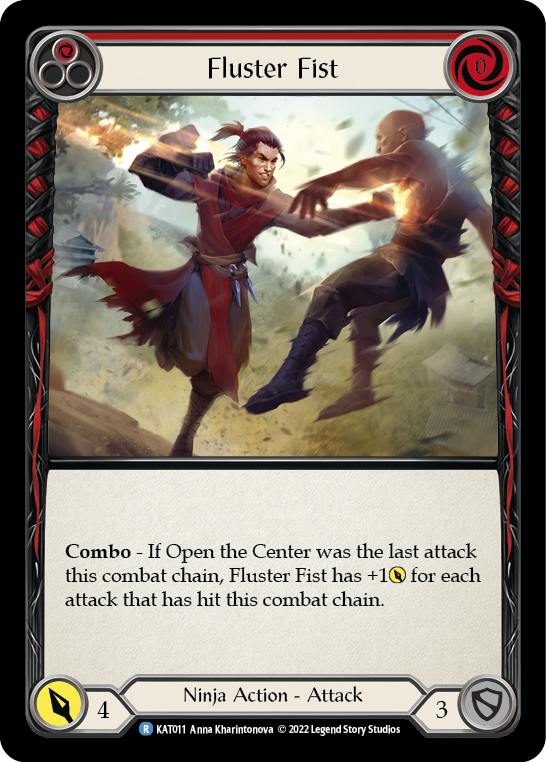
Fluster Fist- specifically in red- is just a generally good aggressive card. You can search for it with Katsu to apply additional pressure for 0 resources when an attack action lands.
You play Remembrance to fatigue your opponent. Getting back your Surging Strike combo pieces, or powerful cards like Command and Conquer, can close out games when your deck is thin and you are out of gas.


Timesnap Potion is usually just a blue pitch card that costs 0, fueling Kodachi attacks. But it is also useful against Prism and her Arc Light Sentinel turns. I have also used it to set up against control mirrors, fueling a turn that looks like "double Enlightened Strike into Command and Conquer" to quickly turn the tempo of the game in my favor.
Pounding Gale is much like Fluster Fist, but with 1 extra point of damage when you have a resource to spare. It’s also a great card to keep in a turn cycle, paired with a blue pitch card to Kodachi, Kodachi, Pounding Gale for a 7 damage turn with a potential Mask trigger.
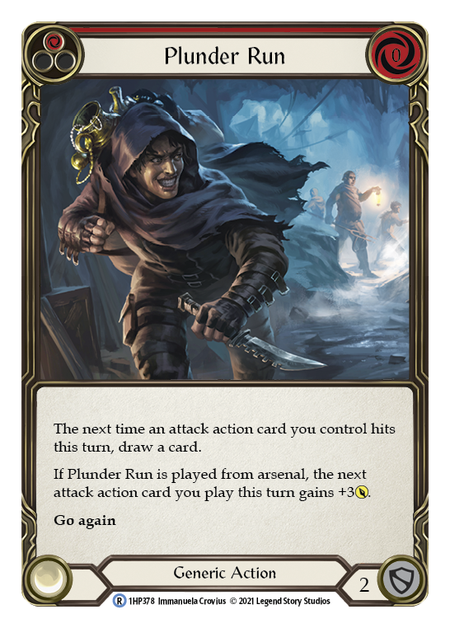
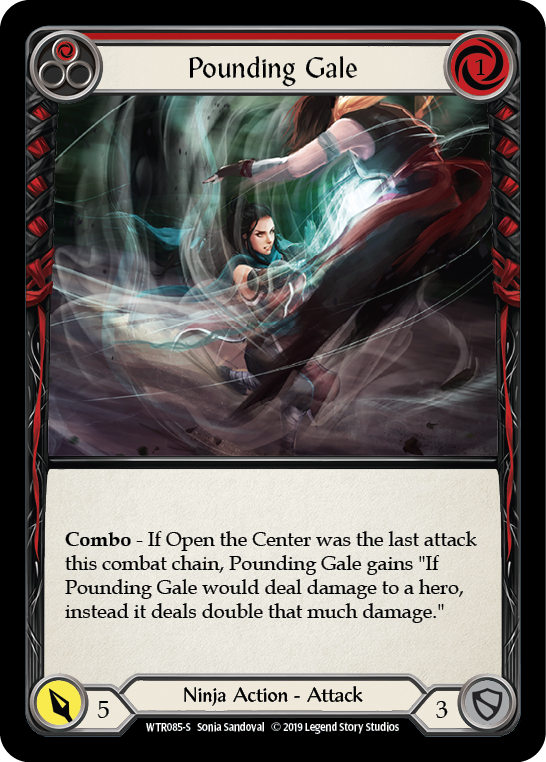
Plunder Run should always be put into arsenal. It's effective at creating an extremely large aggressive turn, and if you can stick a Mask trigger too, you've drawn 2 cards.
In this deck, I save the Razor Reflex to shortcut a combo, such as jumping from a red Whelming Gustwave directly into Mugenshi:RELEASE.
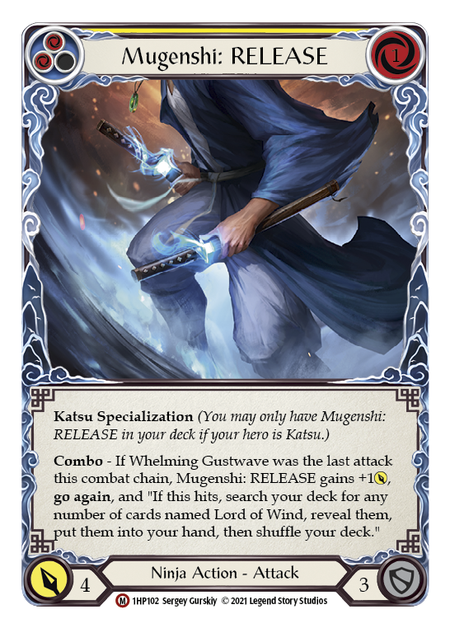

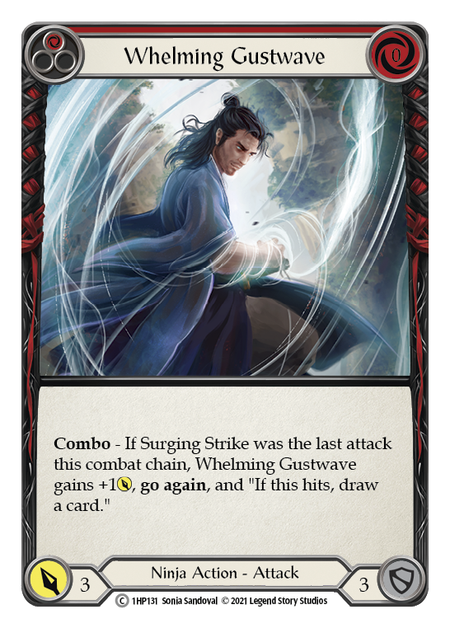
Strategy
Our deck consists of 73 cards. We do not start with any cards in a conceptual 'sideboard'; we simply remove cards that don’t fit with the strategy we choose against our opponent. Generally, we will take the control route and play in a style that mitigates damage, waiting for an opening to go for a critical combo line turn.
When you sit across from any hero, you get to choose how you want the game to play out. Do I want to be the aggressor or the defender? The aggressor wants to take control of the tempo of the game immediately and begin asking the questions first. The defender wants to take a back seat and play a reactive game, answering the opponent’s strongest turns with ease, knowing fatigue will win you the match in the end.
Even in the role of the defender, you will still be able to play powerful aggressive turns to put yourself in the driver's seat. Look to arsenal your combo line cards, such as Surging Strike, red Whelming Gustwave, and Mugenshi: RELEASE if you can. These give you the option of a powerful turn down the line.
Against another deck that plays in a controlling style (Bravo, Dash, a Katsu mirror) you will usually want to pitch your aggressive cards to the bottom, saving them for the late game when they will have more impact and the opponent has less defense reactions.
I have added a single copy of Remembrance to help with the Bravo matchup, as he has gained popularity and many skilled players are choosing him to win events. The goal here is to play a 67-card deck, hoping that the Bravo player will cut down to 60. If they do, you will have a 10 card advantage (7 cards, +3 from Remembrance) to hopefully run them out of cards first. You will rely heavily on Kodachi chip damage in many control matchups.
Matchup Guide
Here is a handy Sideboard / Matchup Guide that I have created for my Ninja friends to print and take to your next Road to Nationals Event.
Ultimately, I think this deck is a fine choice if you are looking for an invite to the National Championships. It rewards careful play and intimate knowledge of the other heroes.



